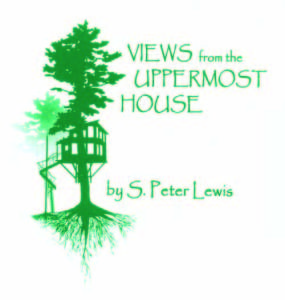Uppermost House: Hope from axiomatic set theory
BN Columnist
I love encouraging people. Born for it. Called to it. Wife. Kids. Friends. Strangers. Anybody. I’m an equal-opportunity cheerleader.
I wake up each day hoping to find creative ways to paste smiles on people’s faces. I keep lists and make phone calls and send emails and even write real letters and mail them. I talk (a little) and listen (a lot) and pray with people (at the drop of a hat). Whatever it takes.
I cheerfully wave at kids while they wait sleepily for the bus at 6:30 in the morning as I drive to work. They wave back, sometimes awkwardly, as if perhaps I was one of the people their parents warned them about. I smile and give them a cheery thumbs-up anyway.
And since encouragement often comes by the spoken or written word, I’m always on the lookout for a turn of phrase that may turn a heart toward hope — and sometimes I find these words in unlikely places indeed.
I recently began reading the biography of John von Neumann, a Hungarian mathematician from the past century most known for his genius work on early computers, game theory, and nuclear physics. The bio is an academic work written by a former editor for the Economist, perhaps a bit dry between the pages, but when I picked it up off the shelf the other day I really didn’t have any more entertaining alternative, like re-caulking the bathtub or shoving flea pills down the cats’ throats with a screwdriver.
Here’s a typical excerpt from the book: “These criteria are clearly known to any creative art, and the existence of some underlying empirical worldly motif in the background — often in a very remote background overgrown by subsequent developments and followed into a multitude of labyrinthine variants…†Blah, blah, blah ad infinitum.
The book is full of this kind of stuff, yet, stowed away in the hold alongside such pedantic esoteric rhetoric I occasionally found nuggets of simple wisdom, scribed as poetry and applicable even to those of us who do not understand (or care to understand) such a things as axiomatic set theory. And when I struck such chance linguistic gold, out quick came my pen to scribble exclamation marks and asterisks in the margins, to add to my stockpile for later use.
As it turned out, later use came much sooner than I expected in the form of a family far away going through a struggle. It was a friend-of-a-friend sort of thing: a mom, dad, and very young son, and the details are not important. But my heart went out to them and what I felt was crucial was to try to bolster resolve and determination as the weary parents tussled to provide stability for their young boy in the midst of self-inflicted turmoil.
And so I sat down and wrote the boy a letter — a note of encouragement from a middle-aged stranger to a toddler, and, vicariously, to said toddler’s parents. I find it easy to relate to children, since I never ceased to be one myself, so I told the boy a little about my own childhood and then grabbed a couple of lines from the von Neumann’s bio that I thought would help the family keep on track and aid in the aiming of their young lad toward the right target.
“Max (von Neumann’s father) did not push his oldest son, but he quietly saw to it that the path ahead was clear.†And, a few pages later: “While casting his anchor to windward, Johnny was also allowed to drift a kite toward the stars.â€
See what I mean, poetry between the decimal points.
Anyway, I hope and pray that my letter to the family is well received and that hope is rewarded by clear direction and a following joy. When I’m done with the von Neumann book, I may dive into Linoleum: an illustrated history. Happy inspiration fairly oozes from the title alone. I’m so excited.


